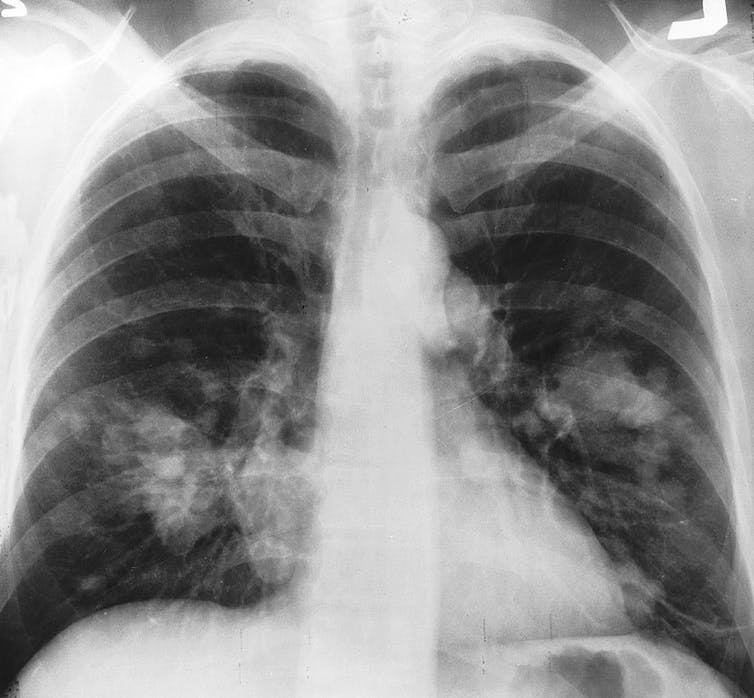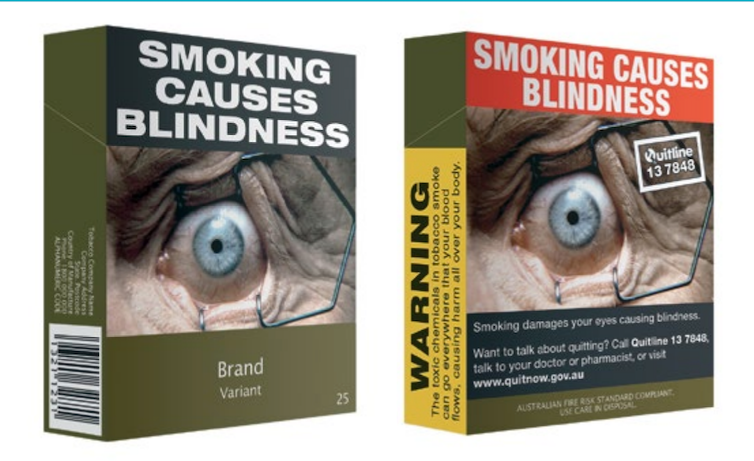It is often said that if the cigarette were invented tomorrow, with what we know today, it would be immediately banned… But vaping shows us that we repeat the same mistakes.
This article was not written by the editorial staff of La Dépêche du Midi, but taken from the partner site The Conversation.
When the cigarette became popular, at the beginning of the XXe century, we were told it was good for your health and everywhere, in all the advertisements (including to young people), smoking seemed so cool… It took us a long time to understand what it really was, and this information came too late for many smokers.
Unfortunately, it seems that history is now repeating itself with vaping.
Before the invention of cigarette-making machines, cigarettes were rolled by hand; an experienced roller produced about 240 cigarettes per hour. When mechanization arrived at the end of the 19e century, the first machines changed the situation. They could produce 12,000 cigarettes per hour at first, eventually reaching a rate of 1.2 million units per hour.
This has made the practice extremely affordable, accessible even to the most modest. These machines may become the worst public health development in history.

Associated with mass communication promoting tobacco, including the famous 1940s advertisement “Doctors smoke Camels more than any other cigarette” which successfully diverted public attention from early concerns about their harmful effects , cheap cigarettes have dramatically increased the prevalence of smoking globally.
A large study in Australia found that up to two out of three long-term smokers died of their addiction. Smokers, moreover, die on average ten years earlier than non-smokers.
Since then, governments have struggled to put in place effective control measures against “Big Tobacco” – the nickname of the five major companies in the tobacco industry (Philip Morris International, Altria, British American Tobacco, Imperial Brands and Japan Tobacco International). The World Health Organization’s 2003 Framework Convention on Tobacco Control devotes an entire section to minimizing interference from the industry, which is always trying to expand and attract new consumers.
When lung cancer was rare…
At the beginning of the XIXe s., lung cancer was rare despite heavy air pollution in cities, due to industries. Still in 1919, the American surgeon Alton Ochsner, remembers having heard it said, while participating in his first autopsy for lung cancer, that he and his colleagues “would perhaps never see such a case again”…

And in fact, the doctor did not see any others until 1936… Then there were nine cases in six months. Given the explosion of smoking that occurred in the United States with World War I, Ochsner was quick to assume that cigarettes were to blame.
Today, and since the 1960s, lung cancer is (by far) the leading cause of cancer death worldwide. Lung cancer (almost all forms of which can be attributed to smoking) is responsible for 18% of all cancer deaths in 2020; liver cancer being the second most common cause of death, at 8.3%.
A now famous graphic from 1994 is circulating among public health officials. It illustrates, tragically, the dynamics of the epidemic of diseases caused by tobacco over the decades.
The curve shows four major stages in the evolution of the tobacco epidemic and associated diseases.
-
First phase (around twenty years): smoking spreads, but the illnesses it causes are still negligible.
-
Second phase (thirties): the consumption of cigarettes reaches its peak in men and increases in women, but the associated diseases begin to increase in the former.
-
Third phase (thirties): cigarette consumption stabilizes among men before decreasing, but only reaches its peak among women. Associated diseases always increase in the former and begin their growth in the latter.
-
Fourth stage (since the 1980s): Smoking decreases in both sexes, but diseases are still developing. These deviations are known as latency periods in epidemiology.
Mesothelioma (cancer of the pleura, which surrounds the lungs) caused by inhaling asbestos fibers also follows this pattern. The latency period between initial exposure and onset of symptoms can be up to 50 years.
Risk, publicity, aroma… What poses a problem
Vaping has only been developing for about ten years. Therefore, if it causes serious long-term conditions such as lung cancer, cardiovascular or respiratory diseases, it is expected that there will still be very few cases at present. That hasn’t stopped some cavalier claims that vaping is “95% less dangerous than smoking.”
This statistic is still often used, although the original article admits that several criteria used to assess the harmful effects of vaping are not sufficiently substantiated.
A lot of preliminary data now indicates that vaping is not harmless. For example, studies have revealed that the products contained in electronic cigarettes contain carcinogens (for the lung), can be correlated with asthma and alter our vascular system.
Knowledge about the deadly toxicology of tobacco smoke has been acquired over decades… For vaping, there is still a huge lack of data. The thousands of flavoring chemicals sucked in thus pose problems for regulatory authorities.
In 2021, the American Association of Flavor and Extract Manufacturers stated that “e-cigarette manufacturers should not claim or imply that the flavor ingredients used in their products are safe. […] for such statements are false and misleading.” Regulators have also never allowed medical asthma inhalers to contain flavorings.

Another point that raises questions: advertising. All forms of tobacco advertising and promotion have long been banned or severely restricted in many countries. But vaping emerged in the age of the Internet, where regulations are much more complex. Social media is now awash with promotions for e-cigarettes, with for example illegal blends being sold as ‘fruit’ on Facebook Marketplace.
Research has shown that indoor spaces where many vapers congregated had higher concentrations of airborne particles than crowded bars when smoking was allowed. No airline in the world allows in-flight vaping.
Repeating the same mistakes again
As youth vaping dramatically accelerates in Australia, Canada, the United States, the United Kingdom and New Zealand, governments are scrambling to find solutions to the problem they created through ill-considered policies and rushed. (In France, the use of electronic cigarettes has tripled in five years among 17-year-olds, editor’s note)
Just as the tobacco industry for decades denied targeting young people, today we see it using nearly identical claims and strategies.
In Australia, vaping advocates argue that laws and regulations applicable to vapes should not be harsher than those applicable to cigarettes. So, while there are no restrictions on where cigarettes are sold, today we see the efforts of the tobacco industry to try to get vaping products authorized to be sold under the same conditions.
The first steps in tobacco control in Australia were the tiny health warnings that appeared in 1973. It then took 40 years of fighting and funding quit smoking campaigns to bring smoking to an all time low.

These 40 years lost are lost both because of initial ignorance of the latent magnitude of tobacco-related diseases…and the sustained pressure exerted by the tobacco industry to frustrate, delay and dilute any policy threatening to limit it.
And it’s important to note that all the major tobacco companies also make vaping products, so it’s not just the same game, but the same players.
It’s often said that if cigarettes were invented tomorrow and we knew then what we didn’t know then, no government in the world would allow them to be sold (let alone be sold in convenience stores)…
Yet this is what is happening today with the vape.
All Australian health ministries, most major political parties, almost all Australian health and medical agencies, and many international agencies, including the WHO, say vaping should be heavily regulated. (In France, it is prohibited in schools and intended for the reception, training and accommodation of minors, in closed means of collective transport and closed and covered collective workplaces, editor’s note)
Proponents of vaping argue that e-cigarettes are key to helping smokers quit smoking, but evidence of this effectiveness is limited.
Currently, vaping devices are widely available, but those that include nicotine-containing liquids are only legally available by prescription in Australia (France has implemented specific regulations, editor’s note). Unfortunately, this does not prevent them from being purchased as illegally as easily online or in certain convenience stores.![]()
Simon Chapman, Emeritus Professor in Public Health, University of Sydney
This article is republished from The Conversation under a Creative Commons license. Read the original article.

